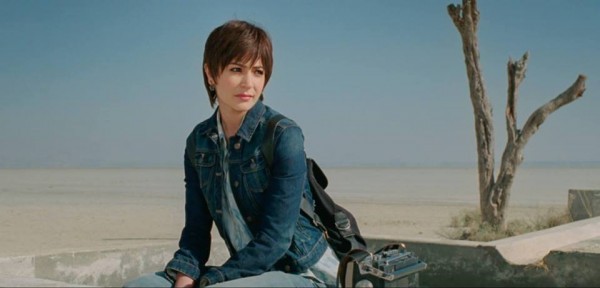
The link between femininity and long hair is a prevalent trend throughout basically every culture worldwide. In the present day, it’s so typical for a girl to get a haircut but it is still considered a “stigma” in many Asian communities.
Cutting off hair in ancient Asian cultures used to symbolize banishment or rejection from home. If you have watched “Avatar: The Last Airbender,” you may remember Prince Zuko. He cuts off his hair, symbolizing the betrayal of his family and country. In Disney’s “Mulan,” the main protagonist slices off her hair to disguise herself as a man to fight in the army, knowing that by doing so, she risks banishment from her family.
In Hindu yogic beliefs, having long hair coiled on the top of the head increases kundalini, a force which increases energy, peacefulness and intuition. For Sikhs, the age-long practice of growing one’s hair naturally is a symbol of devotion to God—it is legally considered a hate crime in the United States to cut a Sikh’s hair.
In Western culture, however, cutting off long hair symbolizes forgetting the past, moving on and starting over.
I was one of those girls. I had gone through an abusive relationship, dealt with the murder of a friend and lost my favorite grandmother to cancer. I wanted to leave the past behind. I traded my waist-length, thick, straight, blue-black hair for a short pixie cut. My head felt nearly ten pounds lighter, and so did I. I was free from the clutches of my past. I felt liberated.
As I walked into Petco one day to pick up treats for my puppy, the cashier remarked, “Wow, I love your hair!”
My friend Nick, who as a rule, hated short hair on girls, said, “You’re actually pulling it off. Well done. It looks very nice.”
My father teased me, saying, “You have the same hairstyle I had at your age. How dare you? That’s my copyright.”
Generally, people liked my hair. They stopped me on the streets to admire its style. I received almost no negative feedback…until I visited India.
Stares. Whispers. Pointing. It was as though they had never seen a 20-year-old girl with short hair. To my friends and family in America, I had a cute pixie cut, but in India, I had the taboo “boy-cut.”
A young woman has freedom to choose her hairstyle in India. There are salons and parlors on every corner. I have seen Indian adolescents sport short, chin-length bobs and long, knee-length braids, but a “boy-cut?” For a woman of my age? That was an unacceptable betrayal of my grandparents’ tradition. To them, having a “boy-cut” meant you were a girl who was not proud of her gender. Having a “boy-cut” meant you were no longer trying to impress boys.
Why is it so?
The definition of femininity and long hair is so tightly intertwined in India that it’s hard for people to understand that the lack of one does not imply lack of the other.
Earlier, traditional Hindu women cut their hair only after becoming widowed, signifying that her hair, and her womanhood, is linked to the life of her husband. Her hair isn’t her own. It belongs to her man.
Society, media and the world at large teaches us that girls are prized for their beauty. Long hair is beauty. Long hair is femininity. Long hair is sex appeal. A woman cutting off her hair is ridding herself of all three.
What good is a woman without the only things society applauds her for? What good is a woman if she doesn’t gratify the male gaze?
When I said I would cut my hair, the most common reaction I received—despite the fact that I have a boyfriend—is that men wouldn’t find me appealing. Others in America warned me against being mistaken for a lesbian.
Why are these considered negative things?
Anyone who believes that the differences in gender identity and sexuality come down to hair length is mistaken and quite frankly, not worth your time.
It is time to eradicate these beliefs. A woman’s hair is her own. A short-haired woman like myself walking down the street shouldn’t be harassed. As feminism becomes more prevalent, more women are invited to shed their shackles and slice off their hair without judgment.
 Shanthi Guruswamy is a 20-year-old pre-med student living in the sunny beach city of Santa Barbara, Calif. She’s a member of UCSB’s only South Asian a capella team, Ravaani and sings all the time, literally. She loves dogs and rabbits and anything fluffy quite liberally.
Shanthi Guruswamy is a 20-year-old pre-med student living in the sunny beach city of Santa Barbara, Calif. She’s a member of UCSB’s only South Asian a capella team, Ravaani and sings all the time, literally. She loves dogs and rabbits and anything fluffy quite liberally.




